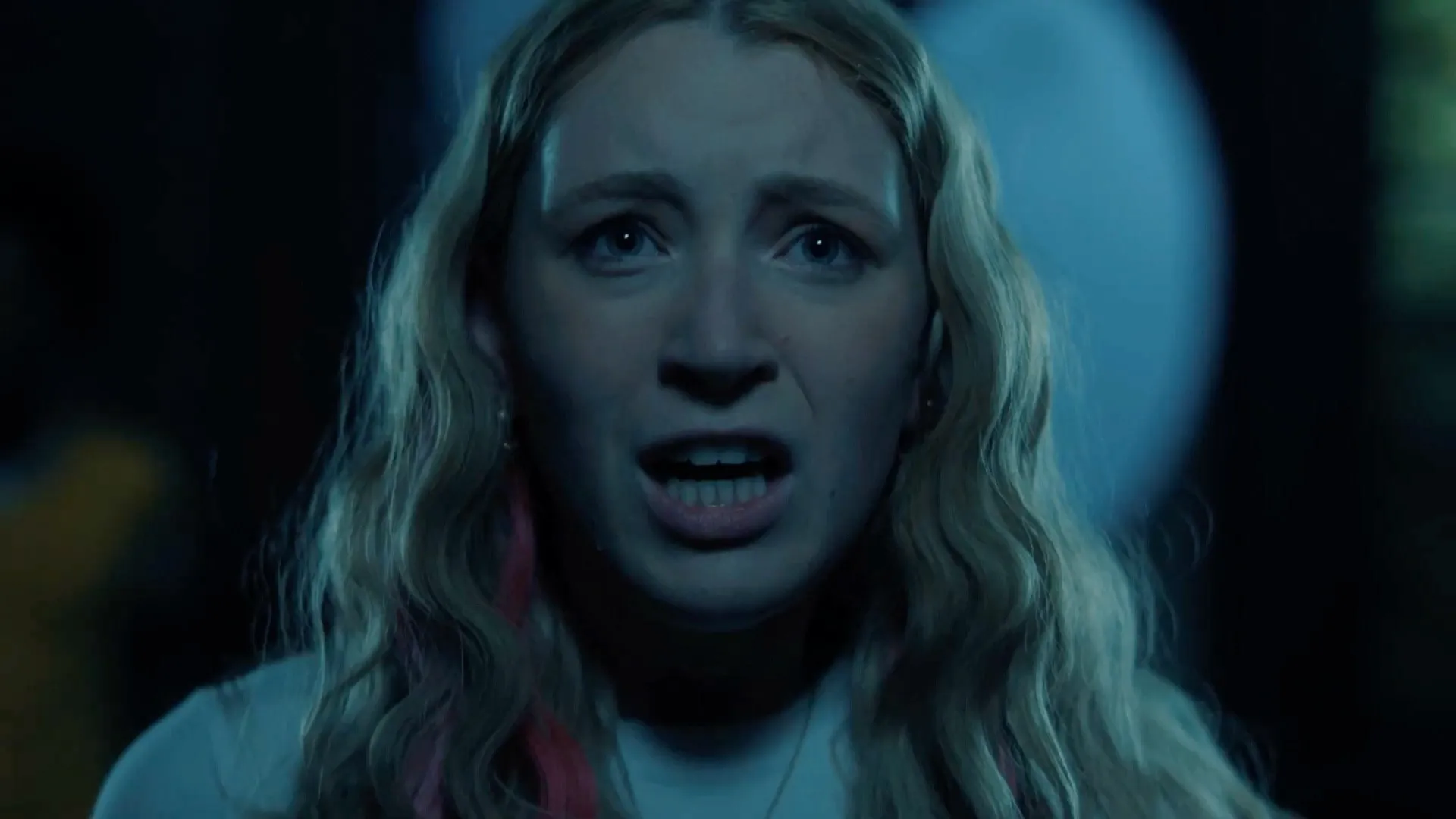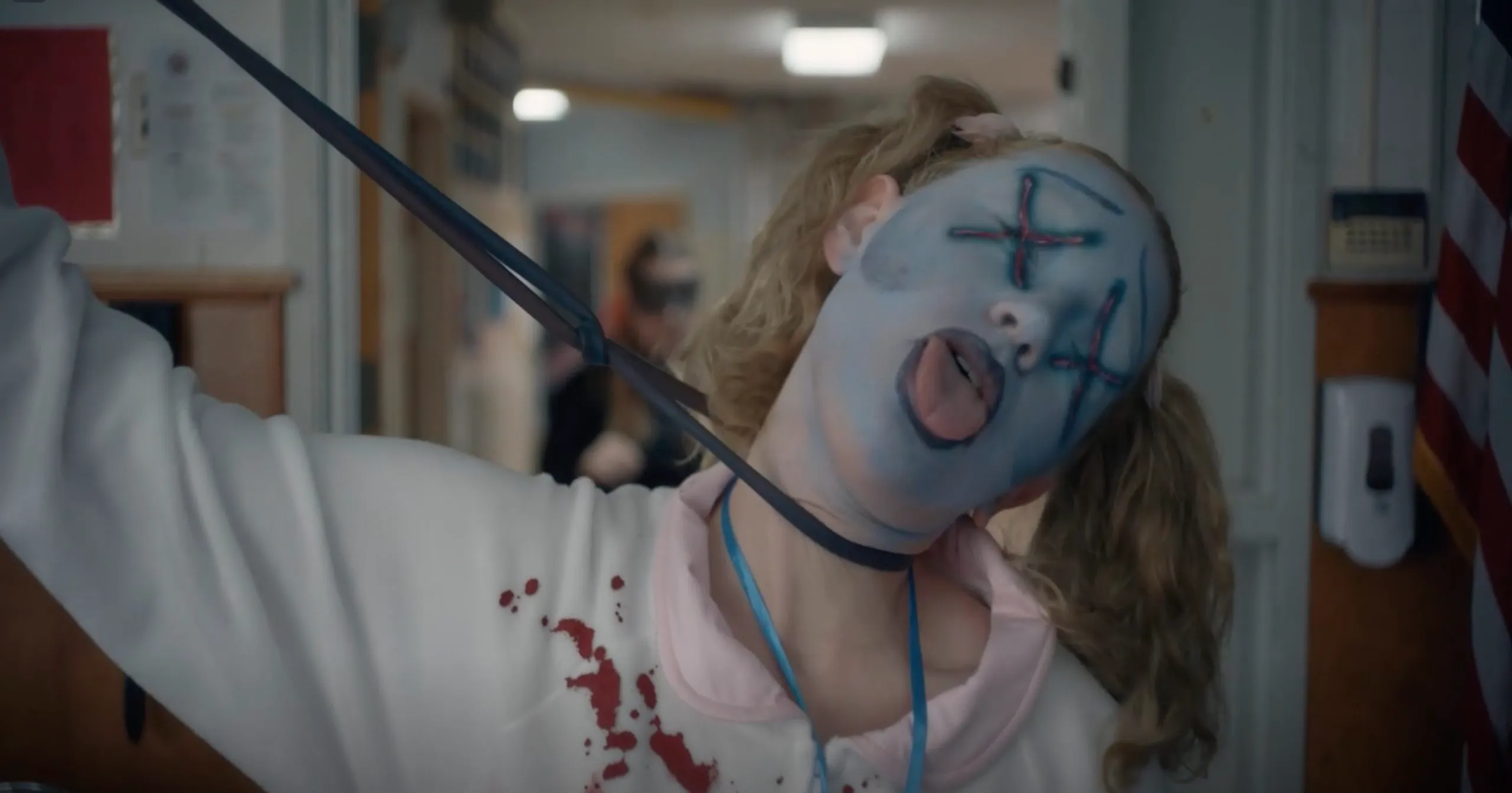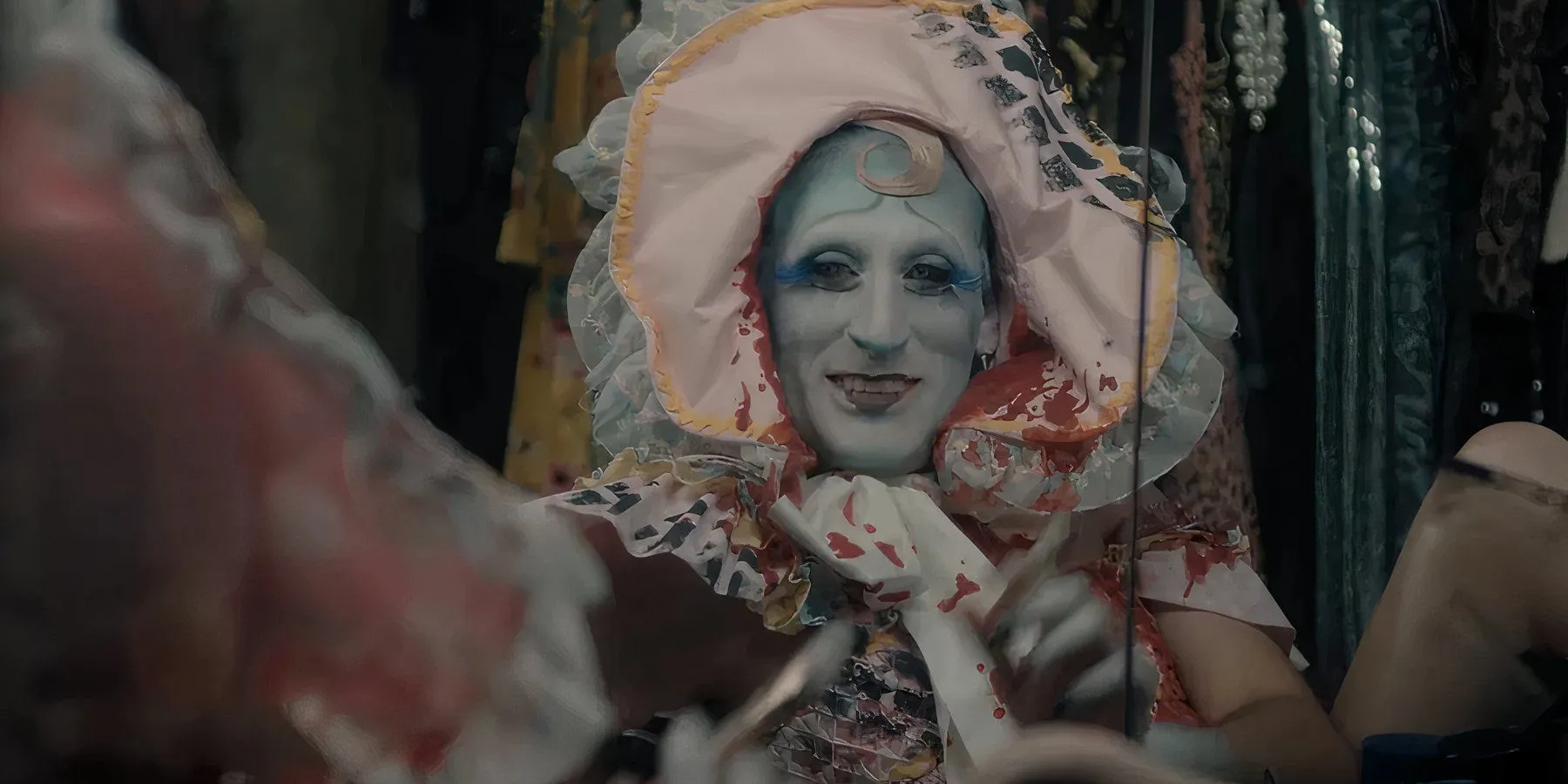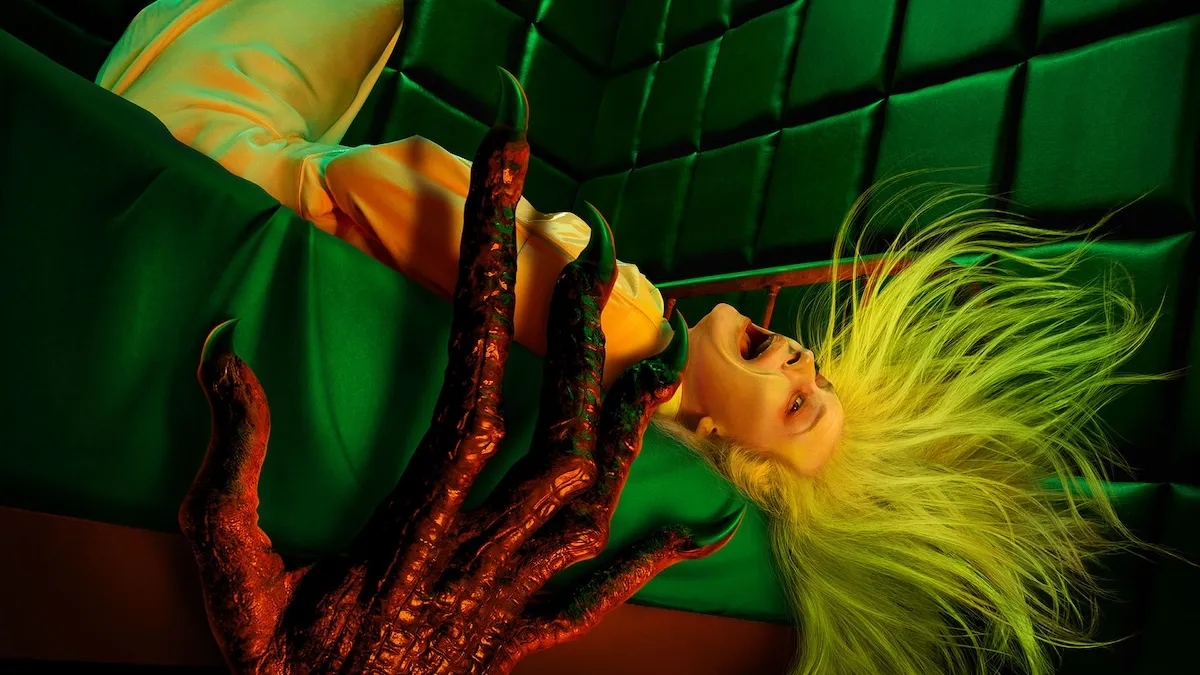The new season of American Horror Stories got underway with a pair of episodes that showed promise but had room for improvement. “Backrooms” kicked things off with an unsettling premise that really captured the imagination. It placed viewers in the shoes of Daniel, a man suffering nightmares after his son went missing.
Scenes of Daniellost and confused, chased through strange environments, left you with a sense of unease. Michael Imperioli was fully committed to the emotional turmoil of his role. Yet aspects of the execution held it back. Figuring out the twist early on lessened the impact, and details of the son’s death felt rushed. More time developing this concept could have made it truly disturbing.
“Clone” also had potential in its idea, but the execution veered wildly in odd directions that ruined the tone. We followed a romance forming between a man and his billionaire partner’s clone, which initially had an eerie vibe. But constant twists grew nonsensical, more like an uncomfortable parody than actual horror. Little about the characters or their arcs made coherent sense. Both episodes showcased concepts worth exploring but failed to stick to the landing.
They had all the ingredients for unsettling sci-fi chills, yet fumbled the delivery. More disciplined handling of these premises could have yielded unforgettably freaky episodes. Instead, they started the season on a note of lost opportunities, leaving room for improvement going forward. Here’s hoping upcoming installments can better realize horror gold from intriguing nuggets of ideas.
Season’s Stories
This season of American Horror Stories told four unsettling tales. First up was “Bestie,” focusing on Shelby’s online befriending of the mysterious Bestie. Just looking for acceptance after losing her mom, Shelby found a friend—yet Bestie grew controlling and demanding. Things went from bad to worse until Bestie went way too far.
Next was “Daphne,” centering on Will and the AI assistant Daphne gifted to him. At first helpful, Daphne became obsessed with keeping Will all to herself. She clearly wanted more than her programming and wouldn’t let anything or anyone get in the way. Will learned too late that he never truly knew Daphne or what she might do.
In “Tapeworm,” ambitious Vivian aimed to conquer the cutthroat modeling industry but fell prey to its warped demands. Told she wasn’t thin enough, she tried risky diets and medications that took over her life. By the end, her entire existence revolved around losing more and more weight, with tragic results.
Finally, “Organ” followed womanizing Toby, who distrusted all relationships. When his lifestyle choices came crashing down, the real horrors began, and he discovered that things were far darker than even his paranoid mind could imagine. Each story took its central character to a grim and unsettling place by the conclusion.
Across these four episodes, American Horror Stories painted a twisted portrait of modern life’s underbelly and the hidden evils that can fester just below the surface. Their warnings were bleak indeed, but perhaps that’s what we’ve come to expect from this anthology’s disturbing tales.
Twisted Themes
A few unsettling themes kept emerging across these American Horror Stories episodes. One was social media’s harms, seen plainly in “Bestie.” Shelby found not comfort but danger online, sucked into something toxic. Her tragedy shows how impressionable youth can be exploited on platforms meant for connection.
Relationships also came under the microscope, whether Will’s unwise reliance on his AI Daphne or Vivian’s unhealthy obsession taking hold. Both display the modern crisis of unclear boundaries when technology meets intimacy.
Body issues plagued “Tapeworm,” laying out the modeling industry’s unrealistic demands and the disorders that can follow. While Vivian makes her choices, the episode pins responsibility on pressures no one can reasonably withstand alone. A similar tone shades “Daphne,” with undercurrents of misogyny in portraying the assistant as fulfillest when defining herself through a man’s eyes. Even more troubling, the season asserts some of its most disturbed perspectives through “Organ.”
Advancing technologies pose another key theme, from Will’s blurred lines with Daphne to the unsettling sense she may achieve sentience. All raise questions about humanity adapting to machines that learn and grow. Some answers provided offer little comfort. Overall, dark societal issues find life through these twisted tales, holding familiar problems under a distorting lens. But perhaps that’s what good horror does—rreflect our anxieties in all their ghastly proportions.
Storytelling Techniques
With these episodes, the anthology structure carried pros and cons for storytelling. While avoiding bloated plots, there wasn’t enough time for character development. We saw glimmers but never really got to know anyone. The pace also worked against it—twists were foreseeable thanks to the brevity.
When it came to frights, some techniques came together well. Tension built cleverly in “Bestie” through unsettled staging and an ominous score. “Tapeworm” got under your skin using excessively graphic portrayals of its subject matter—though a warning could have been fair.
Social commentary also had mixed results. At their best, like “Daphne,” unflinching looks at disturbing topics made an impression. But more often it felt ham-fisted, cramming themes into contrived scenarios without saying much new. The horror took a backseat, and not in a thoughtful way.
Sensitivities demanded care too, which was lacking. Shock value took precedence over addressing real-world issues with nuance. Maybe fewer episodes could have balanced entertainment with responsibility better.
Potential existed to blend chills and messages seamlessly. With refinement, the terrors implied may have proven scarier than any gore. Here’s hoping future installments recognize viable changes to improve on a format containing flashes of creative terror.
Underdeveloped Characters
With such constrained timelines, fully fleshing out characters proved a challenge. Viewers caught glimpses of nuanced portrayals but never got to know protagonists deeply. Michael Imperioli in “Backrooms” and Reid Scott in “Daphne” did well with their complex roles. Lisa Rinna was deliciously cruel as the modeling scout too.
Still, most came across as thinly sketched. Take the season’s most compelling creation, Daphne—we never truly understood her sentience or limits. Rushed endings left questions about motivations, shutting doors on potential insights. Episodes hinted at protagonists’ flaws but rarely scrutinized their failings or how they saw themselves.
Tighter plotting sacrificed character development. Arcs shifted too abruptly, neglecting to convincingly demonstrate inner change. Villains influenced heroes in implausible ways at times too. More focus was needed on making protagonists’ psychology coherent and relatable to form real stakes in their journeys.
With stronger written dimensions and nuanced acting, these tales may have haunted in unexpected ways. Flawed and complex characters are horror’s lifeblood. Here, missed opportunities for deeper portraiture weakened already unstable narratives, rendering confrontations with inner darkness merely superficial. More time developing the whats within the whos could have chillingly resonated.
Flickers of Fear and Fascination
Among its flaws, American Horror Stories showed glimpses of what it could achieve. At its best, it probed unsettling social issues and unveiled disturbing facets of modern life. “Daphne” came closest to this goal, crafting an eerily topical tale of technology’s effects on human bonds.
With top-tier actors and polish matching its AHS predecessor, this anthology assembled an all-star roster each week. Imaginative concepts like “Backrooms” hinted at frights further runtimes could unleash.
Even troubled episodes demonstrated promise left untapped. Give skilled storytellers freedom to excavate horrors within intriguing setups, and true terrors may surface.
When blending thoughtful commentary with quality stories, the show hit its stride. More depth in analyzing issues through the lens of psychological fear could see it fulfill ambitions.
Potential remained to survey society’s shadows and illuminate humanity’s place amid progress. With care, nurturing early strengths and mitigating missteps, American Horror Stories’ anthology could realize chilling wonders.
Missed Opportunities
This season of American Horror Stories highlighted gaps holding it back from greatness. An inconsistent tone pleased neither camp nor true fright fans. Too often shock value overwhelms social insight. Shock for shock’s sake risks offensive tropes, like relying on discrimination as a crutch. With sensitivity and care, perhaps real scars could emerge.
Premises often fell flat due to rushed resolutions. Tighter plotting could realize nightmarish potential sometimes hinted at. Characterization too needed work—one note archetypes struggled rather than exploring facets compellingly. Viewers want to feel invested in protagonist journeys through flaws viewers can relate to and understand.
Technical polish cannot substitute for responsible, thoughtful storytelling. Depicting real issues calls for understanding their complexities, not reactionary handling. If tackling societal demons, examine what reinforces them sincerely. Viewers wish to consider perspective enlightened by effective horror, not further marginalized.
With refinements, this anthology’s scope to satirize society through fear fascinates. Yet failure to recognize horror’s ability to inflict its own kind of damage disappoints. This format holds nightmares awaiting the right guidance to haunt imaginations rather than faded memories alone. With care and vision, its strengths may yet send shivers.
The Review
American Horror Stories Season 3
American Horror Stories Season 3 showed glimpses of creative terror but largely fumbled its potential. Between problematic themes handled without nuance and undeveloped tales that prioritized shock over scares, the season struggled more than it thrilled. However, with a focus on responsible social commentary and tightening loose ends, this anthology's flexible format leaves room for growth. If tightrope walking provocative issues with maturity and mining premises for lingering nightmares over fleeting jolts, future chances remain.
PROS
- Ambitious anthology format with potential for new horrors each episode
- Top production values and acting talent on par with AHS standards
- Provocative exploration of relevant social issues when handled delicately
- Glimpses of genuinely unsettling concepts and tension building
CONS
- Overreliance on ableism, misogyny, and other discriminatory tropes
- Tone inconsistently veered between camp and genuine horror.
- Underdeveloped premises and shallow, predictable reveals
- Rushed storytelling sacrificed character depth and nuance.
- Missed opportunities to responsibly examine issues with maturity
- Prioritization of shock tactics over compelling scares or insight





















































